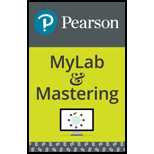
(a)
Interpretation:
The chemical formula of sodium carbonate deca-hydrate is to be stated.
Concept introduction:
A crystalline compound with fixed number of water molecules are known as hydrates. The water molecules are known as water of crystallization. According to
(b)
Interpretation:
The chemical formula of nickel
Concept introduction:
A crystalline compound with fixed number of water molecules are known as hydrates. The water molecules are known as water of crystallization. According to IUPAC nomenclature, the naming of hydrates is done by first naming the anhydrous compound followed by the number of water molecules and hydrate.
(c)
Interpretation:
The chemical formula of cobalt
Concept introduction:
A crystalline compound with fixed number of water molecules are known as hydrates. The water molecules are known as water of crystallization. According to IUPAC nomenclature, the naming of hydrates is done by first naming the anhydrous compound followed by the number of water molecules and hydrate.
(d)
Interpretation:
The chemical formula of chromium
Concept introduction:
A crystalline compound with fixed number of water molecules are known as hydrates. The water molecules are known as water of crystallization. According to IUPAC nomenclature, the naming of hydrates is done by first naming the anhydrous compound followed by the number of water molecules and hydrate.
Want to see the full answer?
Check out a sample textbook solution
Chapter 11 Solutions
EP INTRODUCTORY CHEM.-MOD.MASTERINGCHEM
- Provide the chemical formula for each of the following hydrate compounds. (a) sodium carbonate decahydrate (b) nickel(II) nitrate hexahydrate (c) cobalt(III) iodide octahydrate (d) chromium(III) acetate monohydratearrow_forwardWrite a balanced formula equation for each of the following. Please answer parts (a) through (h) (a) Titanium metal reatcs with selenium to produce crystals of titanium(III) selenide. (b) Phosphoric acid is neutralized with barium hydroxide to produce a precipitate of barium phosphate in water. (c) Nitrogen gas reacts with lead(II) oxide powder to yield lead(II) nitride and oxygen gas. (d) Xenon hexafluoride crystals react with water to produce xenon trioxide powder and hydrofluoric acid. (e) Aluminum carbide is reacted with water in the synthesis of methane gas. Aluminum hydroxide precipitate is also formed. (f) Plants produce the simple sugar C6H12O6 and oxygen gas from carbon dioxide and water during photosynthesis. (g) Ammonia gas (NH3) is formed along with a precipitate of magnesium hydroxide from the reaction of magnesium nitride powder with water. (h) Strong heating of copper(II) nitrate trihydrate produces copper(II) oxide, nitrogen dioxide, oxygen gas and water.arrow_forwardWrite a balanced chemical equation for each of the following decomposition reactions: (a) Magnesium carbonate decomposes on heating. (b) Copper(I) carbonate decomposes on heating.arrow_forward
- Most abundant metal on the surface of the earth:(a) Iron(b) Aluminium(c) Calcium(d) Sodiumarrow_forwardWrite a chemical equation for each of the following chemical reactions: (a) Mercury liquid and fluorine gas react to give solid mercury(II) fluoride. (b) Zinc metal reacts with sulfuric acid to give aqueous zinc sulfate and hydrogen gas.arrow_forwardThe fluoride ion reacts with water to produce HF. (a) Write out the chemical equation for this reaction.arrow_forward
- write a balanced chemical equation for each (A) Iron (III) chloride reacts with sodium hydroxide to produce iron (III) hydroxide and sodium chloride. (B) Magnesium nitrite reacts with perchloric acid to produce magnesium perchlorate and nitrous acid. (C) Copper(II) hydroxide reacts with hydrosulfuric acid to produce copper (II) sulfide and water.arrow_forwardWrite the products of the following reactions: (a) Calcium chloride and potassium fluoride solutions react to form? fill in blank and fill in blank (b) A precipitate forms when aqueous solutions of cobalt (III) iodide and lead (II) nitrate form. fill in blank and fill in blankarrow_forwardName the products formed in each case when(a) hydrochloric acid reacts with caustic soda.(b) granulated zinc reacts with caustic soda.(c) carbon dioxide is passed into lime water.arrow_forward
- A sample of 70.5 mg of potassium phosphate is added to 15.0 mL of 0.050 M silver nitrate, resulting in the formation of aprecipitate. (a) Write the molecular equation for the reaction. (b) What is the limiting reactant in the reaction? (c) Calculatethe theoretical yield, in grams, of the precipitate that forms.arrow_forwardWrite a balanced chemical equation for each reaction.(a) the reaction between potassium metal and bromine gas(b) the reaction between rubidium metal and liquid water(c) the reaction between gaseous chlorine and solid iodinearrow_forwardWrite the chemical formula for iron(I) oxalatearrow_forward
 Chemistry: Principles and ReactionsChemistryISBN:9781305079373Author:William L. Masterton, Cecile N. HurleyPublisher:Cengage Learning
Chemistry: Principles and ReactionsChemistryISBN:9781305079373Author:William L. Masterton, Cecile N. HurleyPublisher:Cengage Learning
